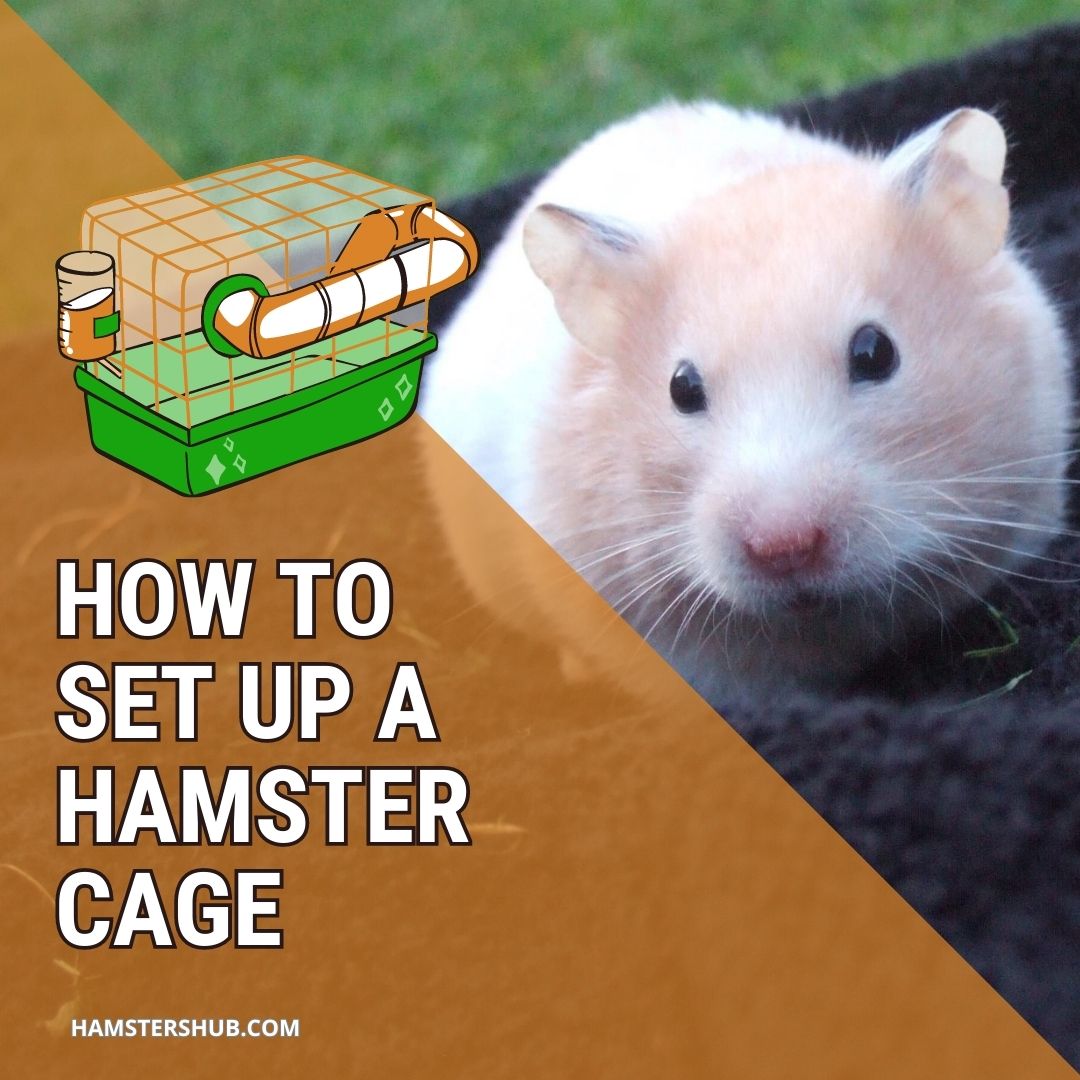Hamsters, those adorable and fuzzy little creatures, make delightful pets for people of all ages. As responsible pet owners, it’s our duty to ensure that our furry friends are not only well-fed and safe but also mentally and physically stimulated.
Do you want to make your beloved furry friend’s living space the ultimate hamster paradise? Well, you’re in for a treat! Create the perfect hamster haven with our comprehensive guide!
Learn how to curate a comfortable cage, select essential accessories, and introduce engaging toys for your furry friend’s well-being. So, let’s craft a thriving sanctuary for your beloved pal!
To set up a Hamster Cage, here’re the things you must have:
1) A large size cage
2) A calm and comfortable place with low light
3) Bedding or Substrate
4) Food Bowl
5) Water Bottle or Bowl
6) Hamster Wheel
7) Sand Bath
8) Hideouts and Nests
9) Chew & Gnawing Toys
10) Climbing Toys & Tunnels
11) Sensory Enrichment
A large Cage for Hamster
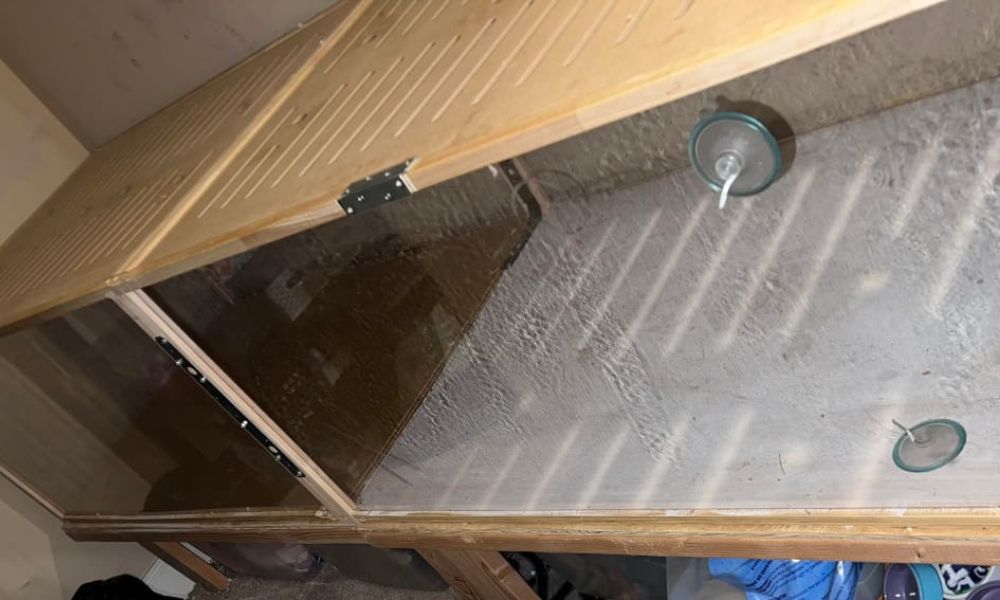
Hamsters are hardworking rodents; they perform various activities in the wild, from creating tunnels to running miles to hunt for food. So they need a lot of space if kept in a cage.
I’ve also seen many beginners, out of lack of knowledge, use small, and their hamsters face a lot of difficulties. According to USA standards, you must have 450 sq inches of unbroken floor space in a cage for Syrian Males and Dwarf hamsters, whereas for Syrian female hamsters, it is 600 sq inches, as they are the most active. Here’s a more detailed guide on hamster cage size.
If you can able to get larger than that, it is better. Or if it is possible to build a DIY cage, that will be a good choice. Here you can know more about hamster cage types. So the first thing you need is a big hamster cage.
A calm & comfortable place with lowlight
Hamsters are nocturnal; they are active at night and sleep during the day. So will have a hard time if they live in our rooms or places. They need a calm spot, away from unnecessary noises, where they can sleep during the daylight. Also, hamsters are prey animals, so must be kept in a place safe from other animals.
Moreover, the temperature of the room should be comfortable; they can not live in an extreme temperature. So the best place would be a room without humans and other noises, with a comfortable temperature, and safe from hunters.
Here is a full guide on where to place the hamster cage; you must read it.
Bedding and Substrate
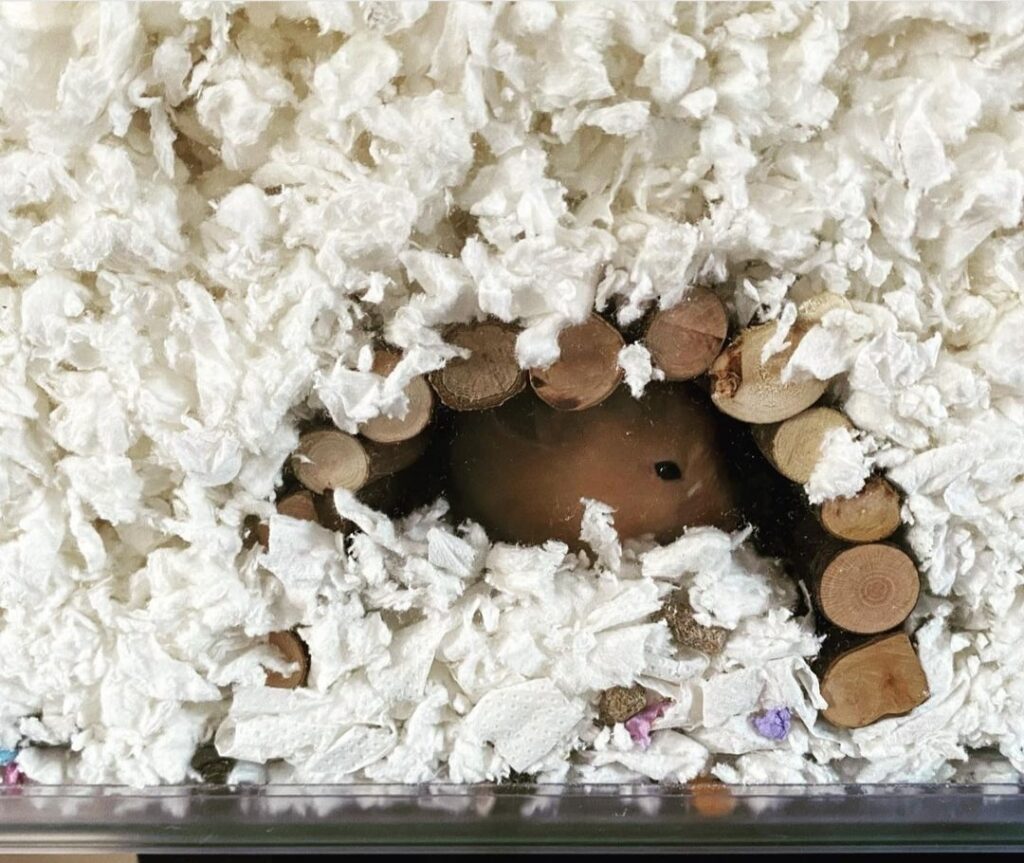
Providing suitable bedding materials is essential for your hamster’s enrichment and comfort. Choose a soft, safe, and absorbent bedding material. Aspen shavings, paper-based bedding, or even shredded tissue paper are good options. Moreover, besides bedding material, its depth is very important. Deep bedding allows hamsters to burrow, a behavior that’s vital for their mental stimulation.
A recent research conducted on the effect of bedding depth on the hamster’s behavior and hamster welfare suggests that a bedding layer of at least 40- 80 cm allows hamsters to engage in natural behaviors like digging and tunneling, promoting mental stimulation and physical activity. Not only that, but hamsters also showed significantly less wire gnawing. Thus, having proper bedding depth and substrate engages their natural instincts, keeping boredom at bay.

Carefresh bedding is one of the bestselling bedding; you can check on Amazon!
Feeding Bowl
Hamsters should have a staple diet. So to provide them with their food, you must put their daily diet in a bowl. Ensure the bowl is not very large because you must also put other things in the cage, and hamsters need a lot of space for their activities.
Scatter food and treats around the cage to encourage foraging behavior. You can also add puzzle feeders filled with hamster-safe treats. This engages their natural hunting instincts and prevents boredom. Unlike animals that rely solely on bowl feeding, scatter feeding allows hamsters to embrace their hamster identity fully.
This adds diversity to their feeding experience and encourages exploration.

Water Bottle or Bowl
Water is essential for all the creatures on this planet. Hamsters need plenty of water to stay hydrated. As they are active at night, at the time we sleep, thus keeping a water bottle or bowl consistently in their cage is a must. Moreover, change their water daily and serve fresh water.
Also, you must clean the water bottle often to make sure the bottle is not dirty, as a dirty bottle is not suitable for health. Water bottles are pretty hard to clean; thus, my personal choice is Water Bowl, which is really easy to clean.
Hamster Wheel
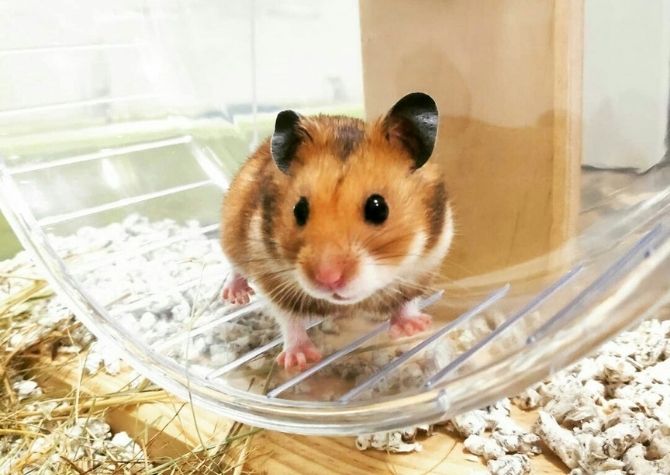
Unlike some other rodents, hamsters have a natural and instinctive genetic drive to run long distances. This intrinsic behavior is quite fascinating and sets hamsters apart from many other animals in terms of exercise performance. Thus, they are active animals that require regular exercise. Therefore a hamster wheel is not just a fun addition; it’s crucial for their physical exercise.
Incorporating an exercise wheel (solid surface, not wire) will make them busy and reduce the chances of their escape. Moreover, recent studies highlight that regular wheel time also significantly improves cardiovascular health and reduces obesity in hamsters. When setting up a hamster cage, adding a hamster wheel that facilitates their intrinsic need for exercise is essential.
| Hamster Species | Wheel Size |
|---|---|
| Syrian Hamsters | 12 inches (30 cm) |
| Dwarf Hamsters | 8 inches (20 cm] |
Sand Bath
Bathing hamsters in water should be avoided due to the unnecessary stress it can cause. Instead, opting for a sand bath is a fantastic way to effectively eliminate dirt and oil buildup in your pet’s fur. It also encourages their natural grooming behavior.
Incorporating a sand bath into your hamster’s habitat is a simple task. You only require a shallow container that offers enough room for the hamster to move around comfortably. Fill this container with sand that is safe for hamsters, and your pet will have an ideal spot for rolling and cleaning themselves.

Hideouts and Nests
Hamsters are naturally shy and nocturnal creatures. Providing hideouts and cozy nests with materials like cardboard, clean, high-quality hay, unbleached cellulose, wood, or coconut shells will give them a sense of security and privacy.
Multiple hideouts in different areas of the cage will make your hamster feel safe. Research-backed insights affirm that hamsters establish territories to reduce stress and feel secure. Therefore, create a multi-level environment allowing them to claim spaces, promoting security and comfort.

Chew & Gnawing Toys
Hamsters have ever-growing teeth that need to be kept in check. Wooden chew toys, branches from fruit trees (avoid toxic woods), and mineral chews provide healthy outlets for their gnawing instincts. This also prevents habituation and keeps your hamster interested and engaged. So, spice up their cage with a small “veggie patch” corner!
Plant hamster-safe herbs like parsley, basil, or mint in a pot within the cage. Mix things up by incorporating small wooden sticks, blocks, and even untreated branches. Not only will your hamster have a blast nibbling away, but their dental health will be in top-notch shape!

Climbing Toys and Tunnels
Hamsters thrive in environments that allow climbing and tunneling. Platforms, ladders, and tubes made from safe materials can turn their cage into a mini adventure park. Set up a mini obstacle course using cardboard, tunnels, and platforms. This not only provides physical stimulation but also keeps their minds sharp as they navigate through the challenges.
Moreover, you can also attach hammocks made from soft fabric to provide cozy lounging spots. Hamsters enjoy lounging above ground level, and hammocks offer a unique way to do so. But, make sure to avoid plastic or painted items that could be harmful if ingested.
Sensory Enrichment
Integrate safe aromatic herbs like chamomile or lavender into their habitat. These scents have calming effects and contribute to sensory enrichment. Moreover, no need to worry about smaller seeds of these herbs getting buried in the bedding as according to studies hamsters possess a remarkable sense of smell and touch. In fact, this aspect adds an element of enjoyment for your pet, motivating them to actively employ their senses in locating their hidden treats.
Conclusion
Creating an enriched hamster cage goes beyond mere decoration; it’s about promoting your pet’s physical and mental well-being. Drawing from recent research and expert insights, we’ve explored various ways to provide your hamster with a stimulating and comfortable home.
By understanding their natural behaviors and needs, you can craft a unique and engaging environment that ensures your furry friend lives a happy and fulfilling life.
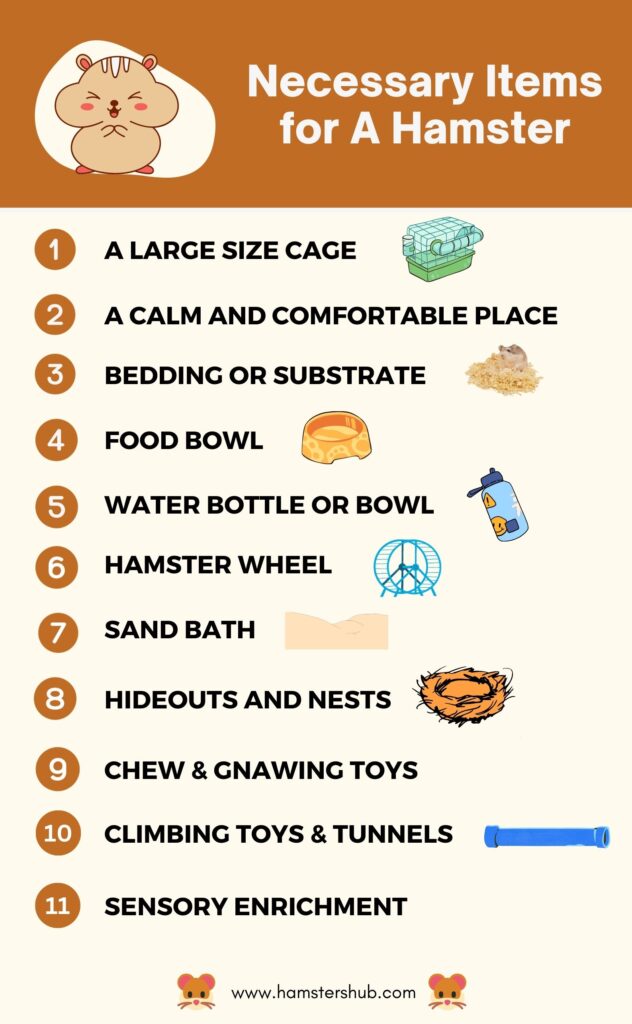
Similar Posts:

